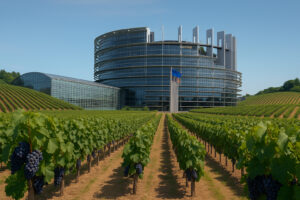2007 was a record-breaking year for Italian wine: exports reached 3.4 billion euros, the average price of Italian wine rose an impressive 7% (news that has given winemakers some breathing room after several unhappy seasons), and increases in consumption have been registered on all markets (which signifies a capacity to overcome economic difficulties as well as cultural barriers). It was a year of overall success for Italian wines, with table wines being the top sellers in absolute.
But, along with these very positive results, Italy must still keep in mind the sector’s weaknesses. Professor of business economy at the University of Florence, Stefano Cordero di Montezemolo, explained: “Italian wine companies are not focused and there is an insufficient and generalized rapport between investments and earnings”.
And Emilio Pedron, General Director of Gruppo Italian Vini, noted that there was no need to exaggerate with the sector’s successes: “Even if the numbers are good, production costs must be contained and the business structure of our companies must be profoundly changed. We still don’t know what will happen with our wines when they reach many emerging markets, and a critical mass that would be capable of holding back the competition still has not been reached”.
The comments of Angelo Gaja are, however, decidedly more optimistic: “The dwarfism of our enterprises should not be tossed out because it has managed to put our wines on all of the markets. 33,000 companies signify an immense human patrimony, and they are the true wealth of Italian wine, together with autochthonous grape varietals and territories”.
And, finally, the head of the Unione Italiana Vini, Andrea Sartori, made a more prudent note: “The small dimensions of may wine companies limits competitiveness. It is necessary to think of a counter-measure like that of creating consortium entities that could favour the consolidation of a more incisive critical mass”.
Copyright © 2000/2025
Contatti: info@winenews.it
Seguici anche su Twitter: @WineNewsIt
Seguici anche su Facebook: @winenewsit
Questo articolo è tratto dall'archivio di WineNews - Tutti i diritti riservati - Copyright © 2000/2025








































































































































































































